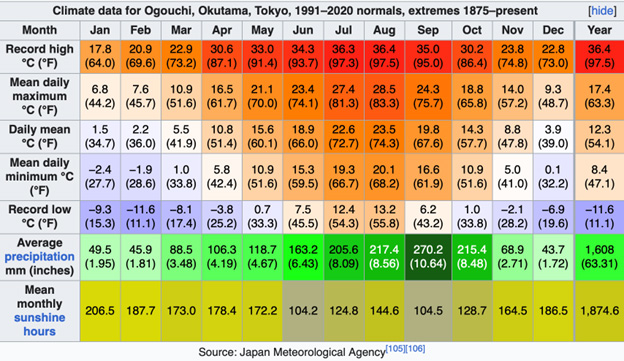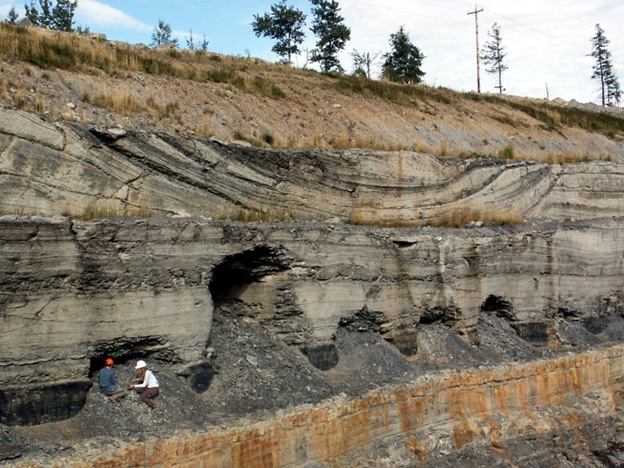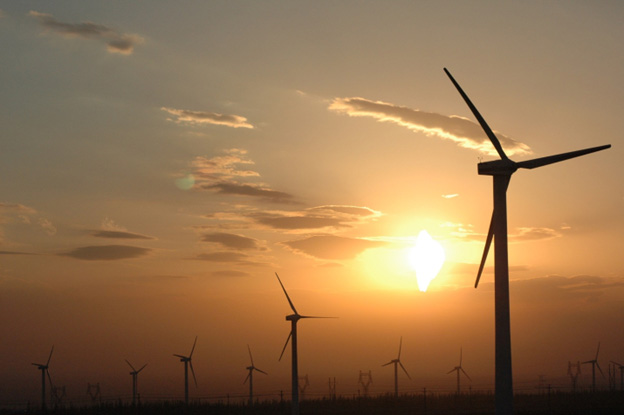HiSET Science Study Guide: Earth Science
Earth science questions will assess your knowledge and understanding of:
- Properties and materials of the earth
- Earth’s systems, geology, natural events, and tectonic forces
- Earth’s position in and relationship to the solar system
- Basic astronomy
Since the HiSET science test puts the least emphasis on earth science, we’ll focus primarily on the key vocabulary you should know for test day.
Earth
The earth is a dynamic, changing place where many forces interact. The following terms are important to your understanding of earth sciences.
Atmosphere: The mix of gases animals breathe. Although animals need oxygen to survive, this element makes up only 20% of the atmosphere. Most of the atmosphere is nitrogen.
Core: At Earth’s center is the core, a molten iron and nickel ball. Its slow rotation creates the magnetic field protecting Earth from harmful cosmic radiation.
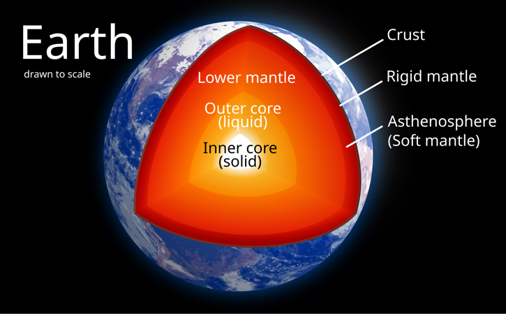
Source: IsadoraofIbiza, CC BY 3.0, via Wikimedia Commons
Although no one has ever seen the Earth’s core, its existence has been confirmed through experimentation.
Fault Lines: Where Earth’s tectonic plates meet. Friction between plates leads to earthquakes.
Global Warming/Greenhouse Effect: Rising carbon dioxide levels create a greenhouse effect, meaning less heat from the sun radiates back into space. Man-made carbon dioxide emissions are causing global warming, a dramatic rise in Earth’s average temperature since the Industrial Revolution.
Magma: The molten rock trapped under the Earth’s crust. Scientists refer to magma as lava once it has breached the surface, such as in a volcanic eruption.
Ozone: A molecule in the upper atmosphere that reduces the amount of ultraviolet radiation reaching the Earth’s surface. An ozone hole appeared over Antarctica in the 20th century due to the release of harmful chemicals.
Pangea: Nearly 300 million years ago, Pangea was a supercontinent containing all the earth’s landmasses. Tectonic drift — Earth’s tectonic plates drifting apart — separated the continents into what we see today.
Fossil Evidence for Continental Drift
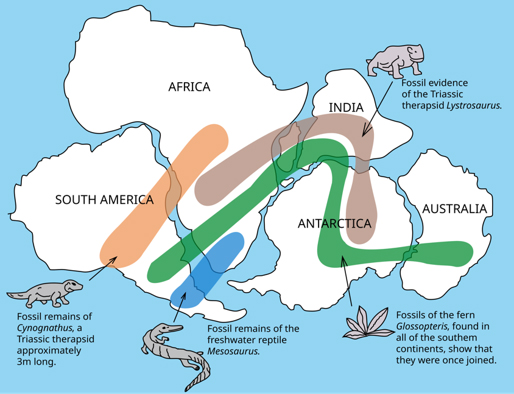
Source: Osvaldocangaspadilla, Public domain, via Wikimedia Commons
Fossil records helped scientists prove Pangea’s existence.
Richter Scale: Measures earthquakes’ intensity. It ranges from 1.0–9.9. Each 1.0 step up in the scale represents 10x the power, meaning a 2.0 earthquake is 10x more powerful than a 1.0 earthquake, and a 3.0 earthquake is 100x more powerful than a 1.0 earthquake.
Subduction: Occurs at a fault line when one tectonic plate slides under another. Subduction is a primary cause of earthquakes.
Tsunami: Meaning “harbor wave” in Japanese, tsunamis are large and often destructive waves. Typical causes include landslides and tectonic plate movement.
Calculated Travel Time Map for 1964 Alaska Tsunami
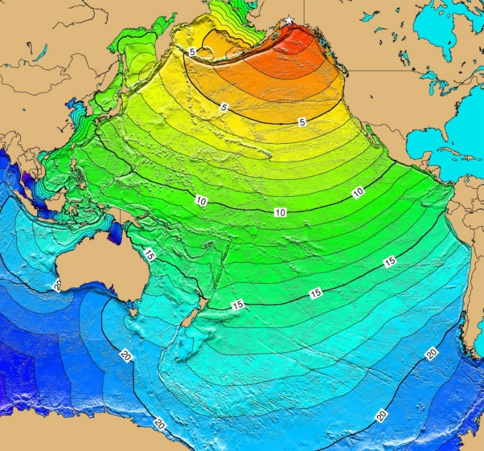
Source: NGDC, CC BY-SA 3.0, via Wikimedia Commons
A Tsunami’s energy can take up to 20 hours to reach other parts of the world and can cause large waves thousands of miles away.
Water Cycle: Describes how water moves between glaciers, the atmosphere, rivers, and other bodies of water.
Weather and Climate
Weather and climate describe the same thing, but they differ in time scale. A weather report may cover the coming week, but climate describes trends spanning decades, centuries, or longer.
Air Pressure: The pressure that the atmosphere’s weight applies to an object. The higher someone travels up into the air, the less air pressure there is.
Gulf Stream: A conveyor belt of hot water that travels from the Gulf of Mexico to the North Atlantic. The Gulf Stream is responsible for much of Europe’s temperate climate.
Seasons: A division of the year based on the earth’s tilt, daylight hours, changes in temperature, and changes in nature. Places close to the poles or the equator experience only one season.
Environment
Earth’s environment is an ever-changing place — one where humans have made a significant impact over the last two centuries.
Conservation: Using Earth’s natural resources in a sustainable way.
Nonrenewable Natural Resources: Resources that the earth cannot replenish (e.g. coal, oil, uranium). The availability of these resources will only shrink over time.
Pollution: The byproduct of industrial activity, such as industrial runoff or the exhaust produced by cars and factories. Pollution can cause short-term (e.g. illness) and long-term (e.g. global warming) negative effects on people and communities.
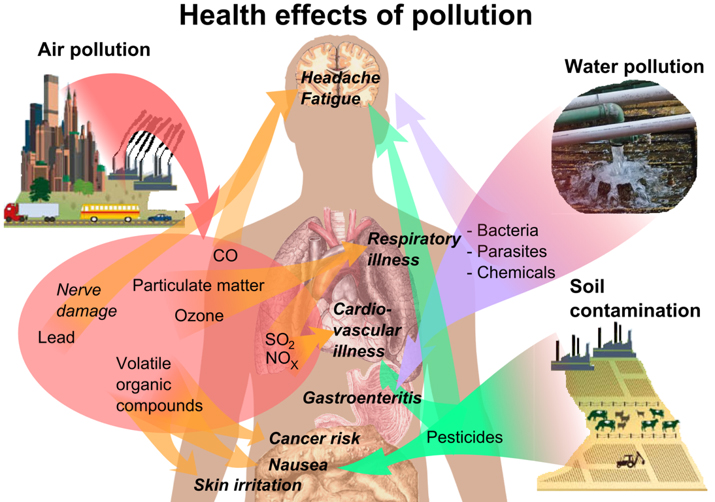
Source: Mikael Häggström, Public domain, via Wikimedia Commons
These are just some of the effects that pollution can have on the human body.
Recycling: An attempt to reduce the need for nonrenewable resources by repurposing existing products made from those resources. Examples include melting down plastic bottles to create new ones.
Renewable Natural Resources: Resources that replenish naturally. Examples include wind and hydroelectric power.
Earth Over Time
Earth has existed for nearly four billion years. In that time, each geological era has left its mark.
Abrasion: A process wherein a surface is worn down by something else traveling over it. During the last ice age 10,000 years ago, moving glaciers caused abrasion to mountain ranges that are still evident.
Deposition: The process by which sediment is deposited in layers. Sedimentary layers visible in rock provide evidence that some places on land were once deep underwater.
Erosion: The opposite of deposition; the taking away of material from a place due to wind or water. Rocks on coastlines experience erosion due to the pounding waves.
Fossils: The remains of organisms over 10,000 years old. A geological process replaced these organism’s living tissue with stone, preserving their shape and appearance. The oldest fossil is from an organism that lived more than three billion years ago.
Weathering: A geological process wherein rocks break down over time due to interactions with the environment. This process turns large boulders into sand between your toes.
Space
Space is a big place, and it’s the job of astronomers to study what is beyond Earth’s thin atmosphere.
Asteroids: Rocks floating through space. They are called meteors if they travel through Earth’s atmosphere and meteorites once they land on Earth’s surface.
Astronomy: The study of outer space and its contents (e.g. planets, galaxies, black holes).
Black Hole: An area of immense gravity that squishes everything that goes inside it into an infinitely small space called a singularity.
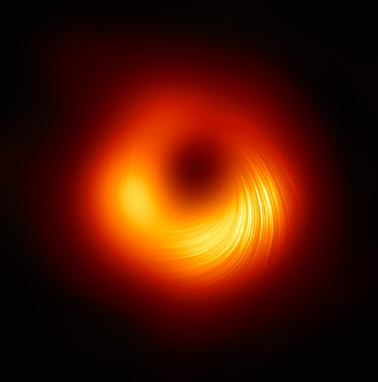
Source: EHT Collaboration, CC BY 4.0, via Wikimedia Commons
Black holes have such strong gravity that they can bend light’s path.
Comets: Made up mostly of dust, small rocks, and ice. When they approach a star, they melt a little, causing a long tail made of gas and dust to form.
Galaxies: Clusters of stars held together by gravity. The smallest galaxies contain only a few million stars, while the largest contain trillions of stars.
Inner Planets: Those in the solar system between the sun and the asteroid belt. They include Mercury, Venus, Earth, and Mars.
Milky Way Galaxy: Home to our solar system. It contains 100–400 billion stars.
Outer Planets: Planets in the solar system that exist beyond the asteroid belt. They include the gas giants Jupiter, Saturn, Uranus, and Neptune.
Satellite: A natural or manmade object in space that orbits an object with greater gravity. The moon is Earth’s natural satellite.
Supernova: When large stars die, they collapse into themselves, causing an immense explosion. A typical supernova is billions of times brighter than the sun.

